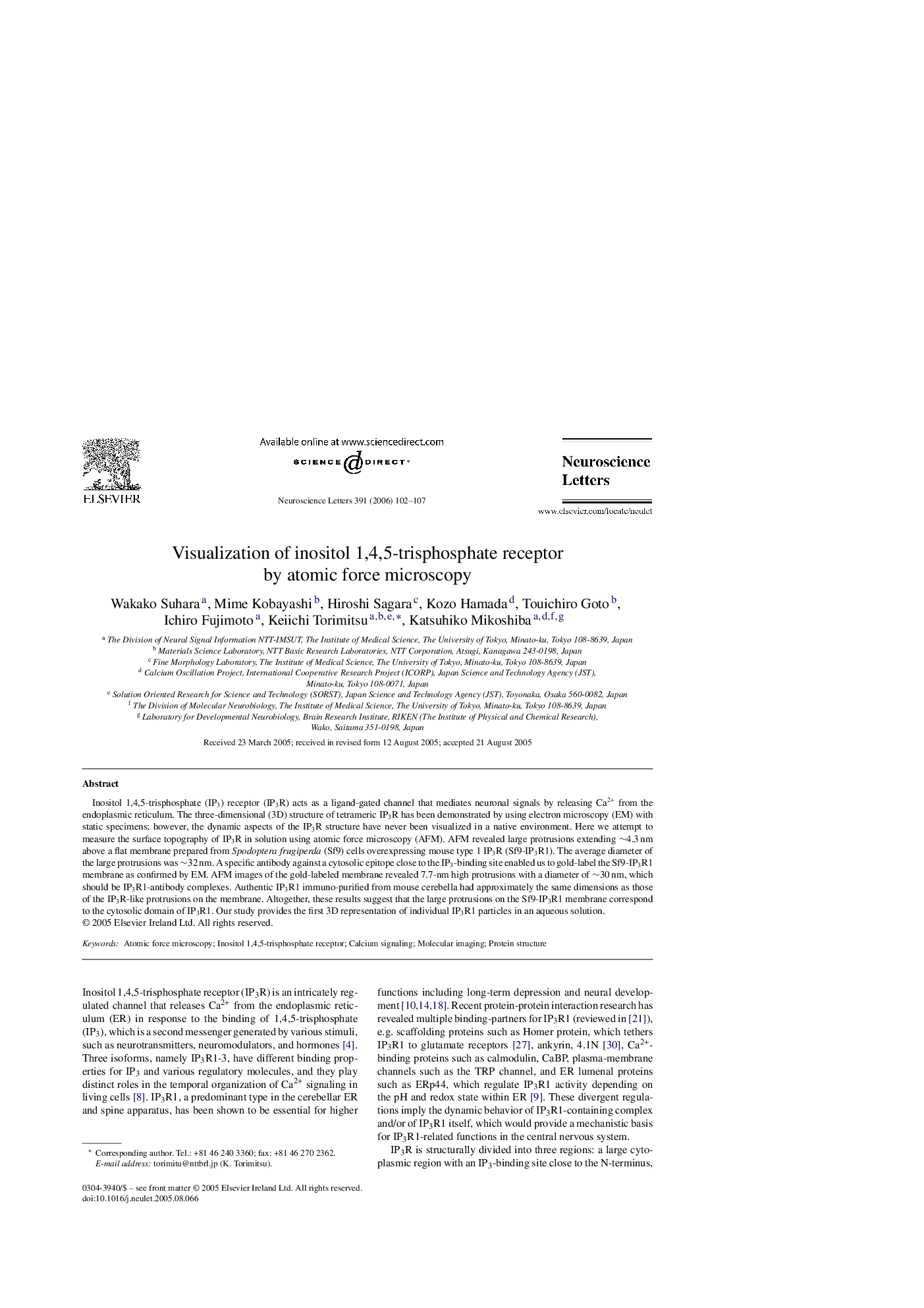| Article ID | Journal | Published Year | Pages | File Type |
|---|---|---|---|---|
| 4351269 | Neuroscience Letters | 2006 | 6 Pages |
Abstract
Inositol 1,4,5-trisphosphate (IP3) receptor (IP3R) acts as a ligand-gated channel that mediates neuronal signals by releasing Ca2+ from the endoplasmic reticulum. The three-dimensional (3D) structure of tetrameric IP3R has been demonstrated by using electron microscopy (EM) with static specimens; however, the dynamic aspects of the IP3R structure have never been visualized in a native environment. Here we attempt to measure the surface topography of IP3R in solution using atomic force microscopy (AFM). AFM revealed large protrusions extending â¼4.3Â nm above a flat membrane prepared from Spodoptera frugiperda (Sf9) cells overexpressing mouse type 1 IP3R (Sf9-IP3R1). The average diameter of the large protrusions was â¼32Â nm. A specific antibody against a cytosolic epitope close to the IP3-binding site enabled us to gold-label the Sf9-IP3R1 membrane as confirmed by EM. AFM images of the gold-labeled membrane revealed 7.7-nm high protrusions with a diameter of â¼30Â nm, which should be IP3R1-antibody complexes. Authentic IP3R1 immuno-purified from mouse cerebella had approximately the same dimensions as those of the IP3R-like protrusions on the membrane. Altogether, these results suggest that the large protrusions on the Sf9-IP3R1 membrane correspond to the cytosolic domain of IP3R1. Our study provides the first 3D representation of individual IP3R1 particles in an aqueous solution.
Keywords
Related Topics
Life Sciences
Neuroscience
Neuroscience (General)
Authors
Wakako Suhara, Mime Kobayashi, Hiroshi Sagara, Kozo Hamada, Touichiro Goto, Ichiro Fujimoto, Keiichi Torimitsu, Katsuhiko Mikoshiba,
